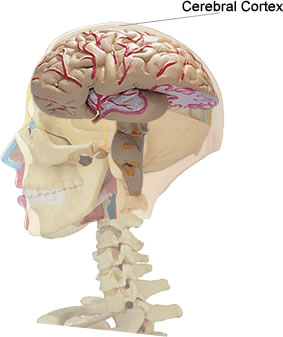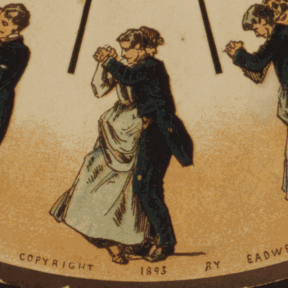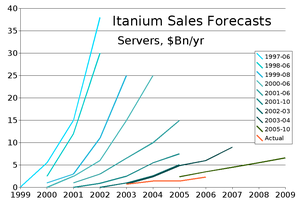
A fallacy, also known as paralogia in modern psychology, is the use of invalid or otherwise faulty reasoning in the construction of an argument that may appear to be well-reasoned if unnoticed. The term was introduced in the Western intellectual tradition by the Aristotelian De Sophisticis Elenchis.
Deductive reasoning is the mental process of drawing deductive inferences. An inference is deductively valid if its conclusion follows logically from its premises, i.e. it is impossible for the premises to be true and the conclusion to be false.

The Graduate Management Admission Test is a computer adaptive test (CAT) intended to assess certain analytical, writing, quantitative, verbal, and reading skills in written English for use in admission to a graduate management program, such as a Master of Business Administration (MBA) program. Answering the test questions requires knowledge of English grammatical rules, reading comprehension, and mathematical skills such as arithmetic, algebra, and geometry. The Graduate Management Admission Council (GMAC) owns and operates the test, and states that the GMAT assesses analytical writing and problem-solving abilities while also addressing data sufficiency, logic, and critical reasoning skills that it believes to be vital to real-world business and management success. It can be taken up to five times a year but no more than eight times total. Attempts must be at least 16 days apart.
Critical thinking is the analysis of available facts, evidence, observations, and arguments in order to form a judgement by the application of rational, skeptical, and unbiased analyses and evaluation. The application of critical thinking includes self-directed, self-disciplined, self-monitored, and self-corrective habits of the mind, thus Critical Thinking is an acquired skill used to evaluate data. Richard W. Paul said that the mind of a critical thinker engages the person's intellectual abilities and personality traits. Critical thinking presupposes assent to rigorous standards of excellence and mindful command of their use in effective communication and problem solving, and a commitment to overcome egocentrism and sociocentrism.
Inductive reasoning is a method of reasoning in which a general principle is derived from a body of observations. It consists of making broad generalizations based on specific observations. Inductive reasoning is distinct from deductive reasoning, where the conclusion of a deductive argument is certain given the premises are correct; in contrast, the truth of the conclusion of an inductive argument is probable, based upon the evidence given.

Logical reasoning is a mental activity that aims to arrive at a conclusion in a rigorous way. It happens in the form of inferences or arguments by starting from a set of premises and reasoning to a conclusion supported by these premises. The premises and the conclusion are propositions, i.e. true or false claims about what is the case. Together, they form an argument. Logical reasoning is norm-governed in the sense that it aims to formulate correct arguments that any rational person would find convincing. The main discipline studying logical reasoning is called logic.
Problem shaping means revising a question so that the solution process can begin or continue. It is part of the larger problem process that includes problem finding and problem solving. Problem shaping often involves the application of critical thinking.

An inquiry is any process that has the aim of augmenting knowledge, resolving doubt, or solving a problem. A theory of inquiry is an account of the various types of inquiry and a treatment of the ways that each type of inquiry achieves its aim.
Verbal reasoning is understanding and reasoning using concepts framed in words. It aims at evaluating ability to think constructively, rather than at simple fluency or vocabulary recognition.
Analytical reasoning, also known as analytical thinking, refers to the ability to look at information, be it qualitative or quantitative in nature, and discern patterns within the information. Analytical reasoning involves deductive reasoning with no specialised knowledge, such as: comprehending the basic structure of a set of relationships; recognizing logically equivalent statements; and inferring what could be true or must be true from given facts and rules. Analytical reasoning is axiomatic in that its truth is self-evident. In contrast, synthetic reasoning requires that we include empirical observations. The specific terms “analytic” and “synthetic” themselves were introduced by Kant (1781) at the beginning of his Critique of Pure Reason.

The following outline is provided as an overview of and topical guide to thought (thinking):
Appeal to the stone, also known as argumentum ad lapidem, is a logical fallacy that dismisses an argument as untrue or absurd. The dismissal is made by stating or reiterating that the argument is absurd, without providing further argumentation. This theory is closely tied to proof by assertion due to the lack of evidence behind the statement and its attempt to persuade without providing any evidence.
An argument is a series of sentences, statements or propositions some of which are called premises and one is the conclusion. The purpose of an argument is to give reasons for one's conclusion via justification, explanation, and/or persuasion.
The psychology of reasoning is the study of how people reason, often broadly defined as the process of drawing conclusions to inform how people solve problems and make decisions. It overlaps with psychology, philosophy, linguistics, cognitive science, artificial intelligence, logic, and probability theory.
Cognitive skills, also called cognitive functions, cognitive abilities or cognitive capacities, are skills of the mind, as opposed to other types of skills such as motor skills. Some examples of cognitive skills are literacy, self-reflection, logical reasoning, abstract thinking, critical thinking, introspection and mental arithmetic. Cognitive skills vary in processing complexity, and can range from more fundamental processes such as perception and various memory functions, to more sophisticated processes such as decision making, problem solving and metacognition.
In information technology a reasoning system is a software system that generates conclusions from available knowledge using logical techniques such as deduction and induction. Reasoning systems play an important role in the implementation of artificial intelligence and knowledge-based systems.

Logic is the study of correct reasoning. It includes both formal and informal logic. Formal logic is the science of deductively valid inferences or logical truths. It studies how conclusions follow from premises due to the structure of arguments alone, independent of their topic and content. Informal logic is associated with informal fallacies, critical thinking, and argumentation theory. It examines arguments expressed in natural language while formal logic uses formal language. When used as a countable noun, the term "a logic" refers to a logical formal system that articulates a proof system. Logic plays a central role in many fields, such as philosophy, mathematics, computer science, and linguistics.
The role of national identification in mental structure or psychological role of national identity emanates from the ideology of identity formation, which in other cases, is referred to as individuation. Therefore, individuation is the development of dissimilar temperament of a person, which constitutes to a continuous entity and how a person is known or recognized. Thus, national identification is both a philosophical and ethical concept. It is where all citizens are alienated into nations delimited by specific geographical boundaries, thus sharing same social, cultural and political ideology. Members of a specific nation forming national identity share collective identity.
As the study of argument is of clear importance to the reasons that we hold things to be true, logic is of essential importance to rationality. Arguments may be logical if they are "conducted or assessed according to strict principles of validity", while they are rational according to the broader requirement that they are based on reason and knowledge.










